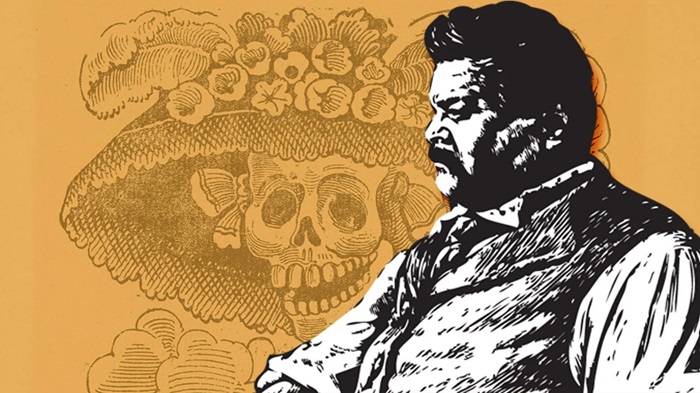Mexican artist and lithographer José Guadalupe Posada, considered by many to be one of the most influential graphic artists in Mexico.
José Guadalupe Posada Aguilar was a Mexican engraver, illustrator and caricaturist. He is famous for his drawings of scenes of customs, folklore, socio-political criticism and for his illustrations of “calacas” or skulls, including La Catrina.
Posada is recognized for capturing and drawing the turbulent and convulsive time that would lead to the outbreak of the Revolution . José Guadalupe Posada is considered the precursor of the Mexican art movement; He was born on February 2, 1852 in Aguascalientes, and died in Mexico City on January 20, 1913.
Posada was considered a precursor of the nationalist movement in the plastic arts by some of those who led it: José Clemente Orozco, Diego Rivera, Francisco Díaz de León and Leopoldo Méndez.
His work is characterized by its satirical approach and its representation of social and political events . Among his most famous creations is La Catrina, an engraving that has become an emblematic symbol of the Day of the Dead. Posada published a large part of his illustrations in street gazettes.
Among José Guadalupe Posadas most important creations we have:
- Ballad of Macario Romero José Guadalupe Posada • 1870.
- Ballad of the Supplicants to San Antonio José Guadalupe Posada • 1870.
- Alcoholic Skull José Guadalupe Posada • 1888.
- Clerical Calavera José Guadalupe Posada • 1895.
- Skull of the Cyclists José Guadalupe Posada • 1895.
What was José Guadalupe Posada’s technique?
Throughout her career, Guadalupe Posada cultivated engraving, drawing, lithography or zincography , a technique that uses a zinc plate instead of a lithographic stone, and which the creator mastered.
The Catrina is the most important work of José Guadalupe Posada
La Catrina , whose original name is “Calavera Garbancera”, which refers to the people who sold chickpeas; those who, having indigenous blood, pretended to be European (Spanish or French) and denied their own race, heritage and culture.
San Miguel Times
Newsroom

